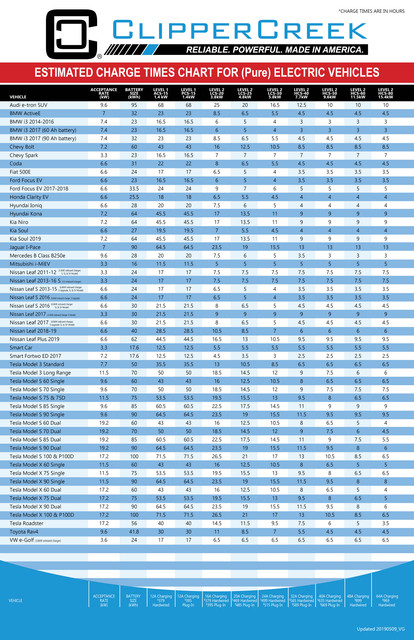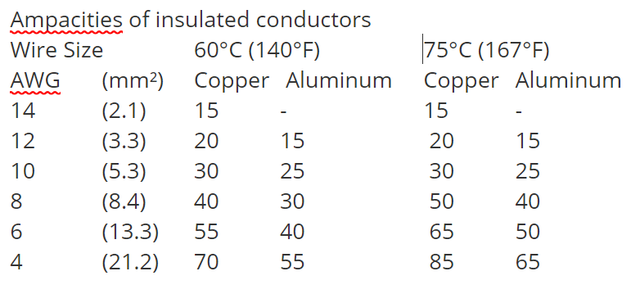rrattie said:
For a 40A/10Kw charger on 220V the circuit breaker must be 50A. Typically you see L2 chargers that charge at 6.6 or 7.2Kw because they are only on a 40A circuit breaker so maxing out at 32A.
Most EV's have 6.6 or 7.2Kw chargers so finding a 40A/10Kw charger is a bit rare.
Good points about EV chargers. There is some confusion, to be expected, as even EV owners/users remain in the dark about charging options.
I do most of my B250e charging at work. We have eight stations, all equipped with Clipper Creek equipment. Two are Slow (L1 level?) and all others are L2. However, two of these are branded "High Power"
The advantage of the "High Power"chargers depends a lot on the vehicle's charging system. In short the EV will only take the current available up to a set point.
Either the max allowed by design of the EV station (that is the Ampacity of the electrical feed and size of the breakers protecting it)
Or the max allowed by the Vehicle
Or the max set by the EV vehicle owner/user.
In the case of the B250e the max charging current value is buried in the settings menu. Worth checking yours to know that you haven't accidentally input a lower value and effectively slowed your vehicle's charge rate.
How do other EVs fair? Here's a handy table from Clipper Creek showing the models and charging times on different EV charger ratings.

If this screen shot is hard to read,
find the source file here
Notice that the B250e data is the same as the "Tesla Model S Single Motor" (regardless of battery size in the Tesla)
In summary, there is little to be gained by installing a "bigger" L2 charger at home (or work) The time savings is trivial in the case of the B250e.
Peter,















